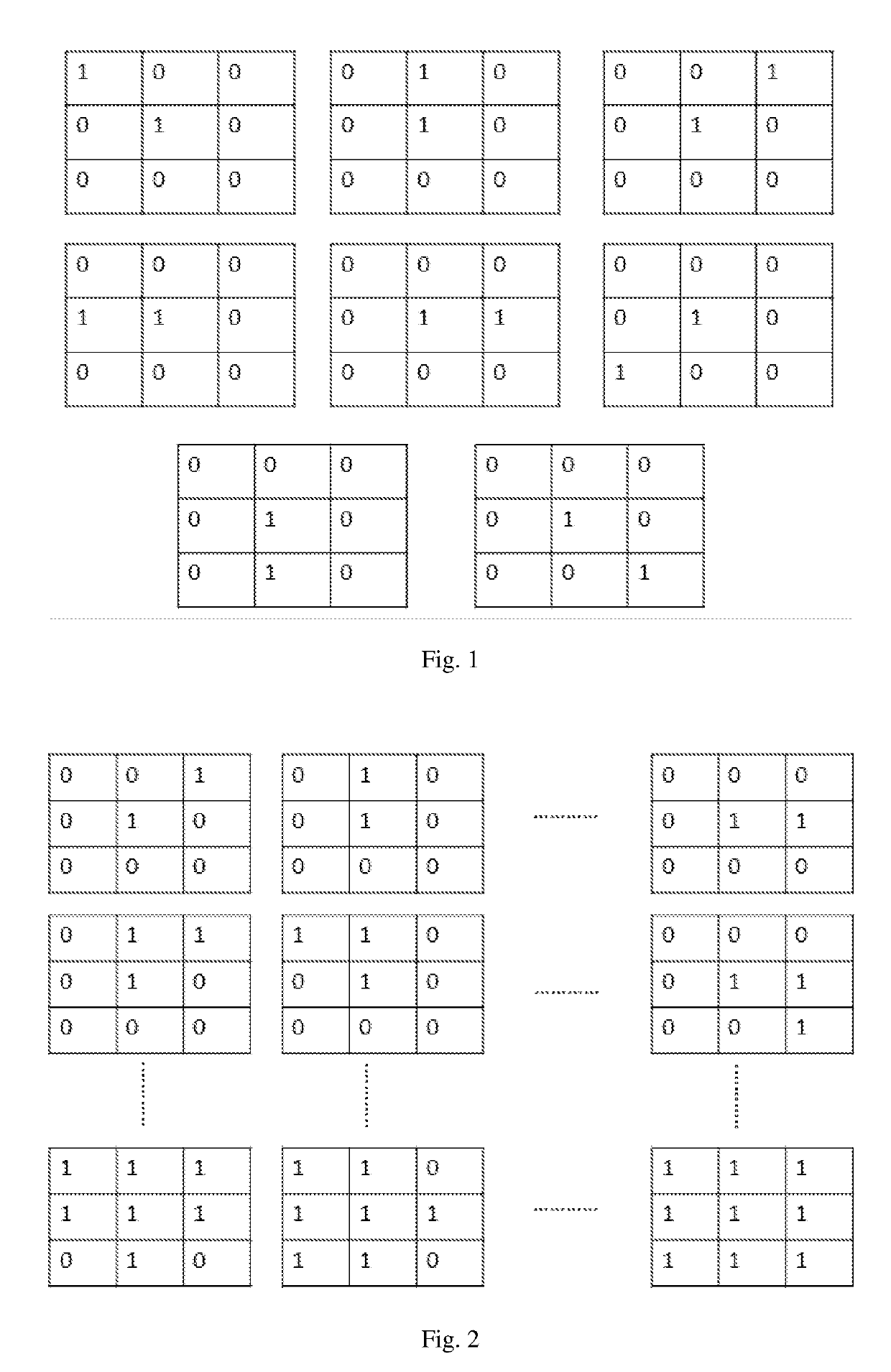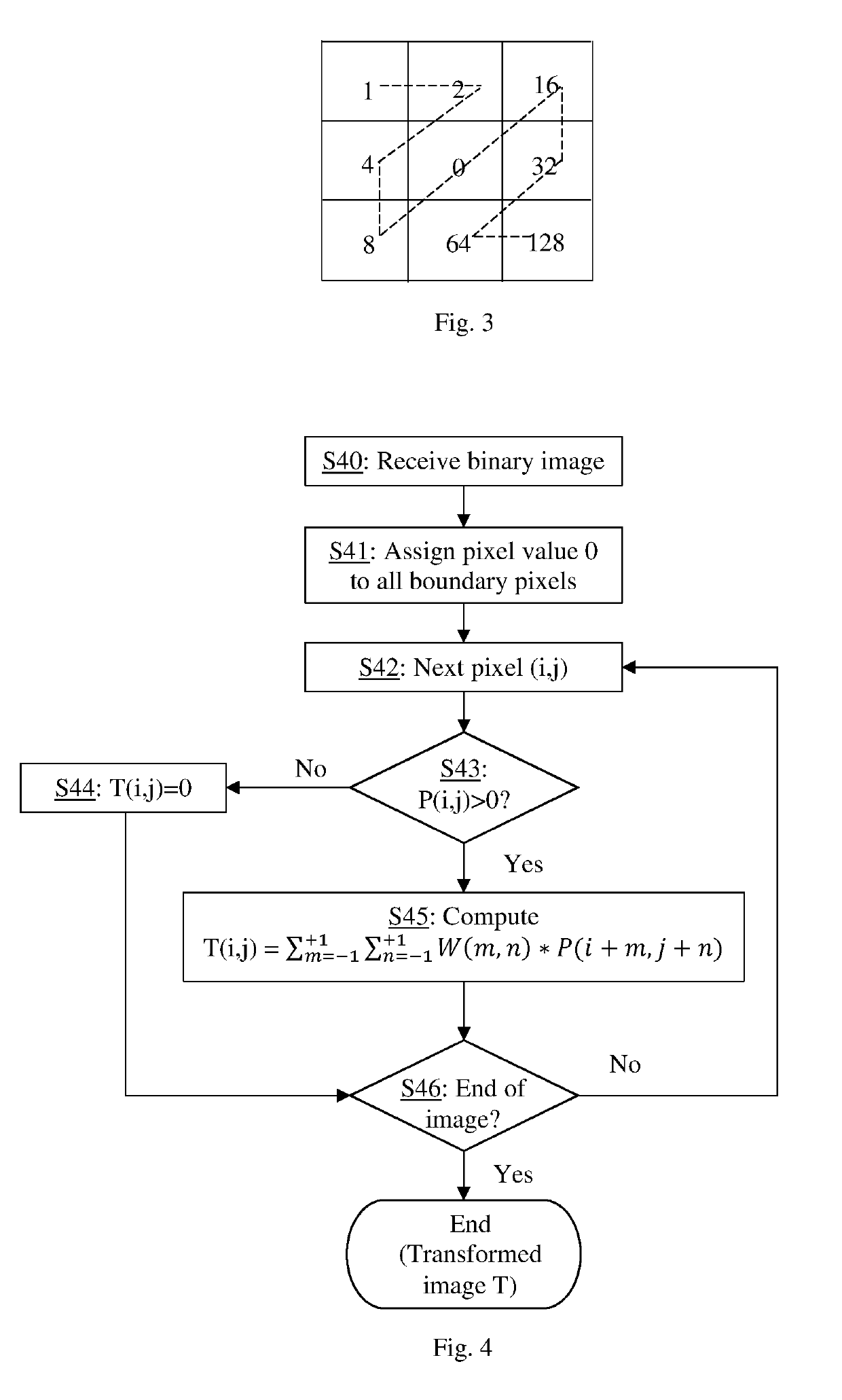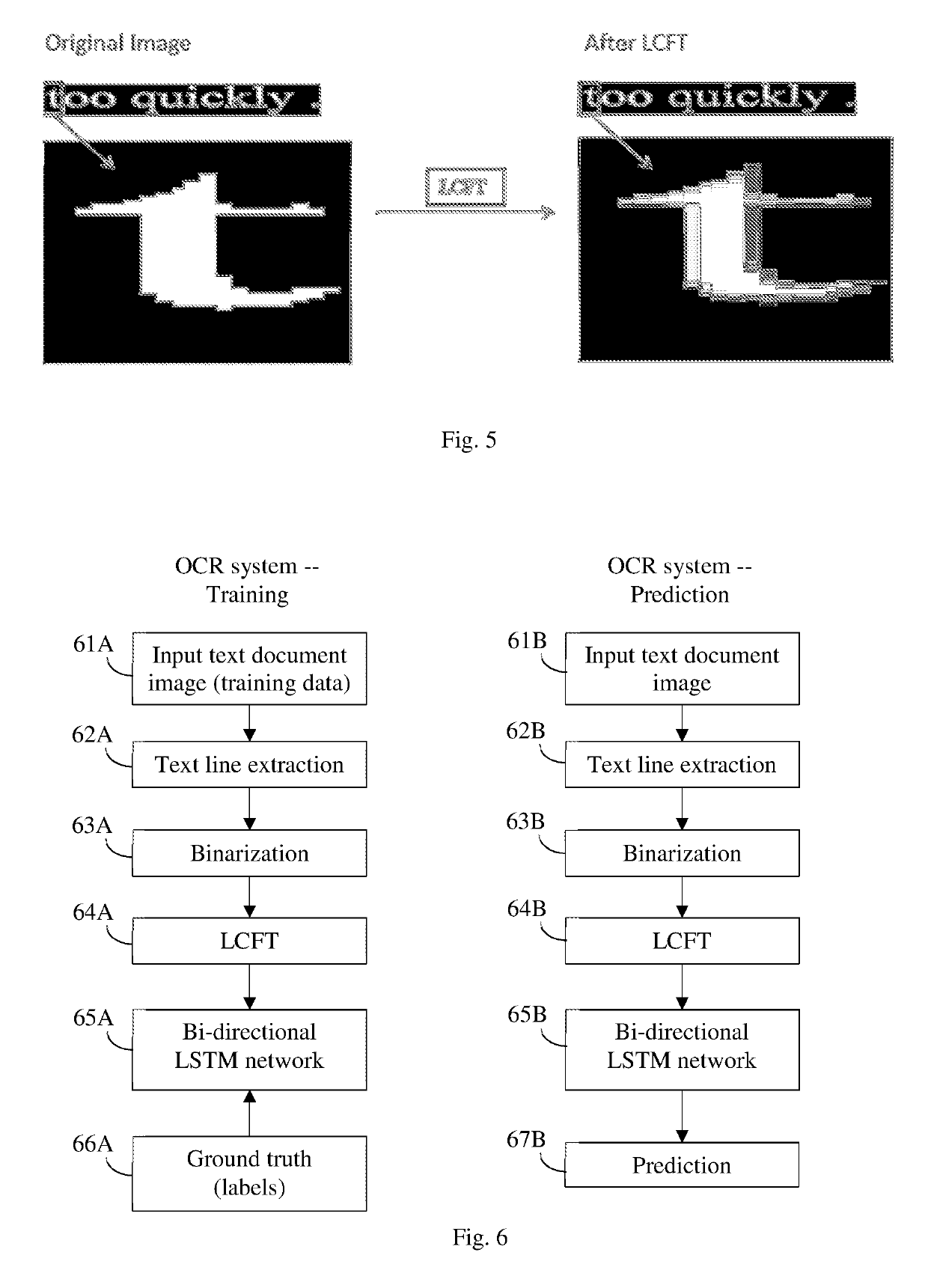Local connectivity feature transform of binary images containing text characters for optical character/word recognition
a local connectivity feature and character recognition technology, applied in the field of document image processing, can solve the problems of difficult to provide a general ocr model that can work well on unseen fonts, perform poorly for even slight variations in fonts, etc., and achieve the effect of improving recognition performan
- Summary
- Abstract
- Description
- Claims
- Application Information
AI Technical Summary
Benefits of technology
Problems solved by technology
Method used
Image
Examples
Embodiment Construction
[0023]Embodiments of this invention provide a process, referred to as local connectivity feature transform (LCFT), for transforming a binary image to encode local connectivity information before passing the image to a neural network for character / word recognition. The transformed image gives better results in character / word recognition compared to using only the binary image itself, when used as network input for cases like OCR where connectivity information is very important.
[0024]In the descriptions below, in a binary document image, background pixels (e.g. white areas of the document) are assumed to have a pixel value of zero and pixels that represent content of the document are assumed to have a pixel value of one. The method can be readily modified for a binary image where background pixels have a pixel value one and content pixels have a pixel value zero.
[0025]The LCFT transformation uses a 3×3 pixel block that surrounds a subject pixel (at the center) as a base for computing ...
PUM
 Login to View More
Login to View More Abstract
Description
Claims
Application Information
 Login to View More
Login to View More - R&D
- Intellectual Property
- Life Sciences
- Materials
- Tech Scout
- Unparalleled Data Quality
- Higher Quality Content
- 60% Fewer Hallucinations
Browse by: Latest US Patents, China's latest patents, Technical Efficacy Thesaurus, Application Domain, Technology Topic, Popular Technical Reports.
© 2025 PatSnap. All rights reserved.Legal|Privacy policy|Modern Slavery Act Transparency Statement|Sitemap|About US| Contact US: help@patsnap.com



